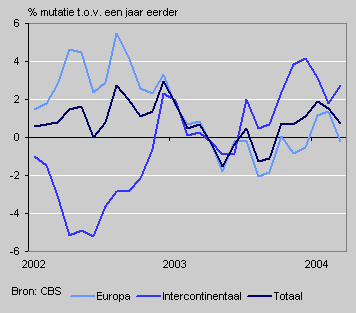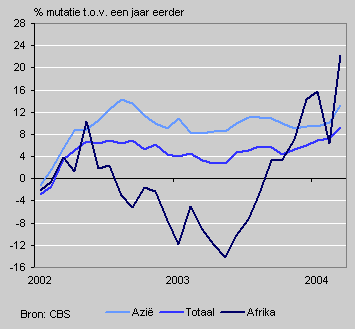More passengers travel through Schiphol

At the beginning of 2003 the number of passengers travelling to and from Schiphol slowed down but in the last quarter of 2003 the downward trend was reversed. Intercontinental flights made a substantial contribution to the recovery. At the beginning of 2004 freight traffic continued to grow, particularly to and from Africa and Asia.
Passenger transport recovers
In 2003 the number of passengers travelling by air was nearly 1 million down on peak year 2002 when some 41 million passengers travelled to and from Schiphol. The SARS epidemic and the war in Iraq were partly accountable for the decrease. As from the last quarter of 2003 carriage of passengers picked up. Although the number of passengers on intercontinental flights increased, most passengers fly to destinations in Europe continent; European destinations account for more than two-thirds of total passenger transport.
Passengers travelling to and from Schiphol

Higher occupancy rate on scheduled flights
Since 1997 an average 88 percent of all passengers have taken scheduled flights, 12 percent have taken charter flights. Seat capacity utilisation on scheduled flights has been improving over the last years. The occupancy rate on scheduled flights rose from 61 percent in 1992 to 74 percent in 2003. The occupancy rate for charter flights was between 75 and 79 percent in the same period.
Freight transport by air continues to grow
In 2003 a total of 1.3 million tons of freight were transported to and from Schiphol Airport, 66 thousand tons more than in 2002. At the beginning of 2004 freight transport particularly to and from Africa and Asia grew excessively. Asia is still the most important destination, accounting for more than half of total freight transport.
Freight traffic from and to Schiphol

Roberto Wekker